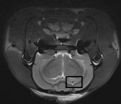(Press-News.org) Climate change is set to affect the quality of the wines of the Tempranillo grape variety, according to the conclusions of a piece of research conducted by the Basque Institute for Agricultural Research and Development Neiker-Tecnalia, in collaboration with the University of Navarre and the Aula Dei (EEAD) Experimental Station of the National Council for Scientific Research (CSIC). Scientists from these bodies have studied the behaviour of the vines in conditions of climate change; in other words, higher temperature, increased presence of CO2 and greater environmental aridity. The result is a must with a lower anthocyanin content, which leads to wines with less colour and therefore lower quality. The results of the research, led by the agricultural engineer Urtzi Leibar, have been presented at the conference of the European Geosciences Union (EGU), held in Vienna (Austria).
The research has been conducted in a greenhouse environment with vines of the species 'Vitis vinifera cv. Tempranillo'. The three factors studied were climate change, water stress of the plant and soil texture. To analyse the effect of climate change on the grapes, some vines were placed in conditions of a greater presence of CO2, higher temperature and lower relative humidity, while other vines were situated in current climate conditions.
In addition to the CO2 and temperature changes, climate change is expected to cause a reduction in rainfall, with this rainfall being distributed across more extreme events. That is why the researchers subjected the vines to two different treatments. One with properly hydrated plants (20-35% of water content in the soil) and the other treatment consisted of plants subjected to water stress, and which were irrigated with 40% less water. As regards the soil, three different textures were studied with clay contents of 9%, 18% and 36%.
Among the most significant results as regards production and qualitative parameters, climate change was found to bring forward the grape harvest by nine days. This reduced the anthocyanin concentration, which resulted in red wines with less colour. It also caused an increase in the pH of the must. The pH level is a factor of interest for wineries, since it has to be low if the wines are going to be preserved optimally.
The water shortfall, for its part, delayed ripening –the grape harvest was carried out ten days later– and the growth of the vine was reduced. This fact also meant an increase in the pH of the must and a reduction in polyphenol content. Polyphenols are found in grape skin and pips and give wines aroma, colour and taste. As regards soils, the sandiest ones –with the lowest clay content– produced musts with a higher anthocyanin level, which yields wines with more colour.
Information of interest for the wine growing sector
The final aim of the study by Neiker-Tecnalia, the University of Navarre and the EEAD-CSIC is to make available information that will assist the wine growing sector in mitigating possible damage by the anticipated climate conditions or, where appropriate, to take advantage of the opportunities that may present themselves.
The climate is the factor that exerts the greatest influence on the suitability of a region for vine growing and wine production, since it directly affects the development of the vineyard and grape quality. Climate change is therefore an aspect that the sector needs to take very much into consideration.
The vineyard surface area across Spain amounts to 954,000 hectares, which is 5.6% of the total cultivated surface. The wine growing sector is an hugely important activity in terms of the economic value it generates, the population it employs and the role it plays in environmental conservation.
INFORMATION: END
Neiker-Tecnalia studies the effects of climate change on Tempranillo grape wines
2014-04-30
ELSE PRESS RELEASES FROM THIS DATE:
7.0T NMR assesses changes in hippocampal neurons in animal models of Alzheimer's disease
2014-04-30
Magnetic resonance spectroscopy can quantitatively analyze in vivo abnormalities of biochemical metabolism within brain tissue in a noninvasive and non-radioactive manner. Compared with 3.0T magnetic resonance spectroscopy, high-field magnetic resonance spectroscopy (≥ 7.0T) exhibits high spatial resolution and density resolution, microscopic imaging of the living body, and obtains both high scanning resolution and result precision within a shorter scan time, thus providing a higher value in clinical diagnosis. In a recent study reported in the Neural Regeneration ...
A researcher from the University of Cádiz discovers 18 new species of molluscs
2014-04-30
Molluscs are invertebrates that make up one of the most numerous groups in the animal kingdom. They are everywhere, from great heights of over 3,000m above sea level to ocean profundities of over 5,000m deep, in polar and tropical waters and they tend to be common elements on coastlines around the world. Within this animal group are found the nudibranchs, characterized among other things, for not having shells and being brightly coloured. This colouring alerts their predators to their toxicity. Within this group, in turn, we can find the Aeolidiidae family.
This family ...
Deep brain stimulation for obsessive-compulsive disorder releases dopamine in the brain
2014-04-30
Philadelphia, PA, April 30, 2014 – Some have characterized dopamine as the elixir of pleasure because so many rewarding stimuli – food, drugs, sex, exercise – trigger its release in the brain. However, more than a decade of research indicates that when drug use becomes compulsive, the related dopamine release becomes deficient in the striatum, a brain region that is involved in reward and behavioral control.
New research now published in Biological Psychiatry from the Academic Medical Center in Amsterdam suggests that dopamine release is increased in obsessive-compulsive ...
Candid 'insider' views in the NHS could help detect reasons for poor care
2014-04-30
Asking NHS staff about what affects whether they would recommend their organisation for family and friends is an important source of intelligence for improving quality and safety of care, says a new study.
This finding by researchers in the Universities of Leicester, Aberdeen, and Bristol has been published in a paper, 'The friends and family test: a qualitative study of concerns that influence the willingness of English National Health Service staff to recommend their organisation', in the Journal of the Royal Society of Medicine.
Since 2009, the annual Staff Survey ...
Greater surgeon experience increases likelihood of mitral valve repair vs. replacement
2014-04-30
Toronto, ON, Canada, April 30, 2014 – A new study presenting data from 17 cardiac surgical centers in Virginia, representing 100 surgeons and 99% of cardiac operations performed in the state, demonstrates that, even today, significant variations – among surgeons and hospitals - still exist in the performance of mitral valve repair vs replacement for moderate to severe mitral regurgitation. Significant associations were observed between the propensity for MV repair and both institutional and surgeon annual volume, although increasing surgeon volume appears to be the much ...
CT in the operating room allows more precise removal of small lung cancers
2014-04-30
Toronto, ON, Canada, April 30, 2014 – A new technique that brings CT imaging into the operating room will allow surgeons to precisely demarcate and remove small sub-centimeter lung nodules, leaving as much healthy tissue as possible, according to Raphael Bueno, MD, of Brigham and Women's Hospital in Boston. His team is presenting the results of this late-breaking research at the 94th AATS Annual Meeting in Toronto, ON, Canada on April 30, 2014.
Lung cancer remains the deadliest cancer and a recent study, the National Lung Cancer Screening Trial, indicated that screening ...
New lab-on-a-chip device overcomes miniaturization problems
2014-04-30
UNSW Australia chemists have invented a new type of tiny lab-on-a-chip device that could have a diverse range of applications, including to detect toxic gases, fabricate integrated circuits and screen biological molecules.
The novel technique developed by the UNSW team involves printing a pattern of miniscule droplets of a special solvent onto a gold-coated or glass surface.
"We use a class of 'green' solvents called ionic liquids, which are salts that are liquid at room temperature. They are non-volatile, so this overcomes one of the main problems in making useful miniaturised ...
MRI shows disrupted connections in the brains of young people with ADHD
2014-04-30
OAK BROOK, Ill. – A new study has found that children and adolescents with attention deficit hyperactivity disorder (ADHD) have disrupted connections between different areas of the brain that are evident on resting-state functional magnetic resonance imaging (rfMRI). The results of this research are published online in the journal Radiology.
The findings point to the potential of rfMRI to help provide objectively accurate, early diagnosis of a disorder that affects approximately 5 percent of children and adolescents worldwide.
ADHD is a disorder characterized by age-inappropriate ...
Want a young child to 'help' or 'be a helper'? Choice of words matters
2014-04-30
How do you get a preschooler to help with chores and other household tasks? A new study suggests that adults' word choice can make a big difference.
The study, by researchers at the University of California, San Diego, the University of Washington, and Stanford University, appears in the journal Child Development.
The researchers carried out two experiments with about one hundred and fifty 3- to 6-year-olds from a variety of ethnic and racial backgrounds who came from middle- to upper-middle-class homes. In both experiments, an adult experimenter began by talking to ...
Working memory differs by parents' education; effects persist into adolescence
2014-04-30
Working memory—the ability to hold information in your mind, think about it, and use it to guide behavior—develops through childhood and adolescence, and is key for successful performance at school and work. Previous research with young children has documented socioeconomic disparities in performance on tasks of working memory. Now a new longitudinal study has found that differences in working memory that exist at age 10 persist through the end of adolescence. The study also found that parents' education—one common measure of socioeconomic status—is related to children's ...

